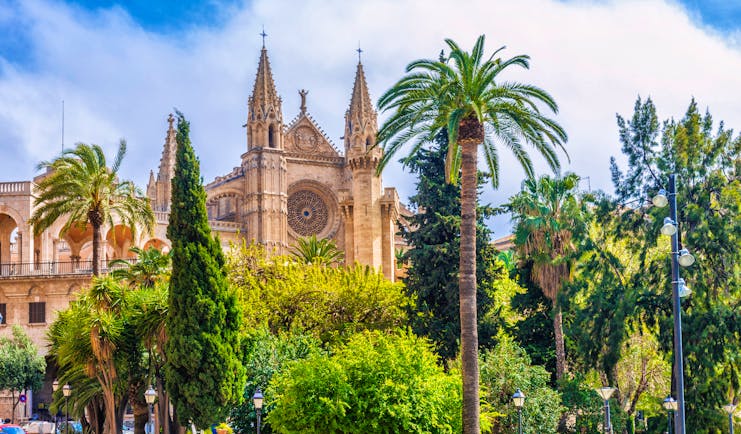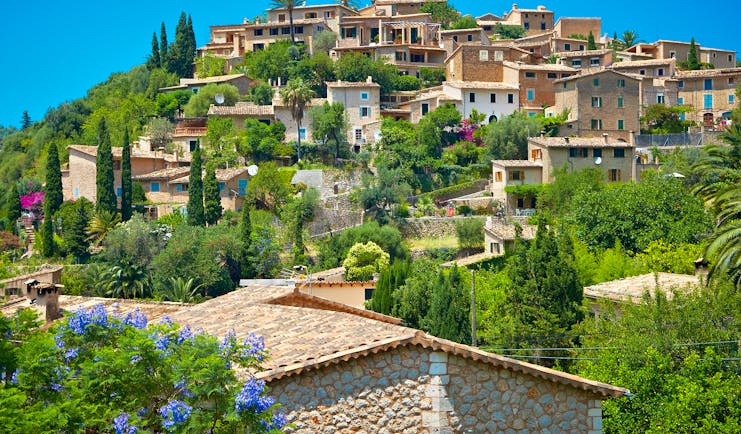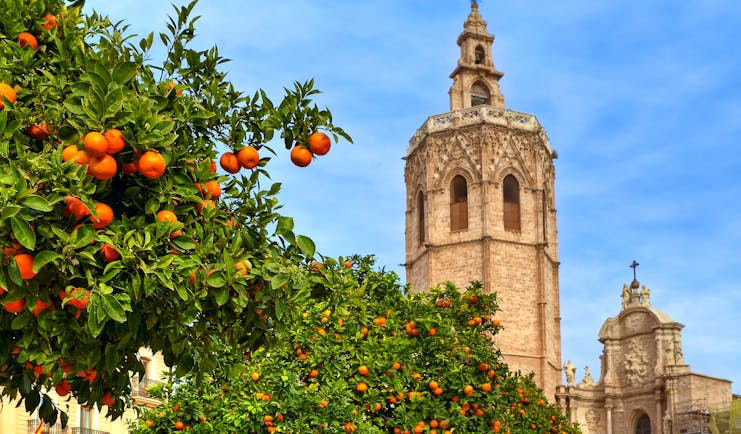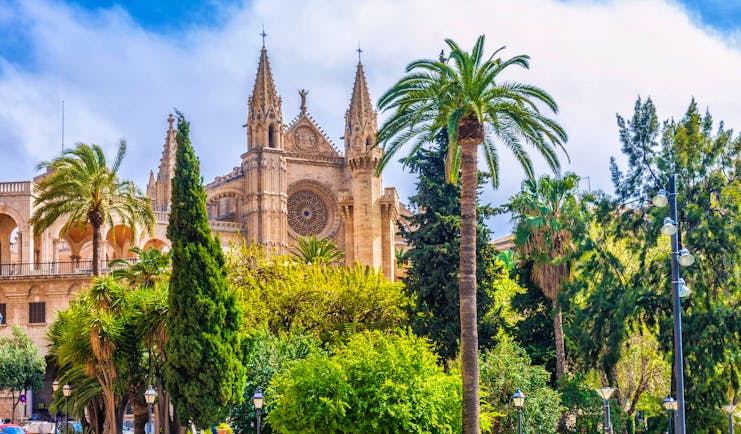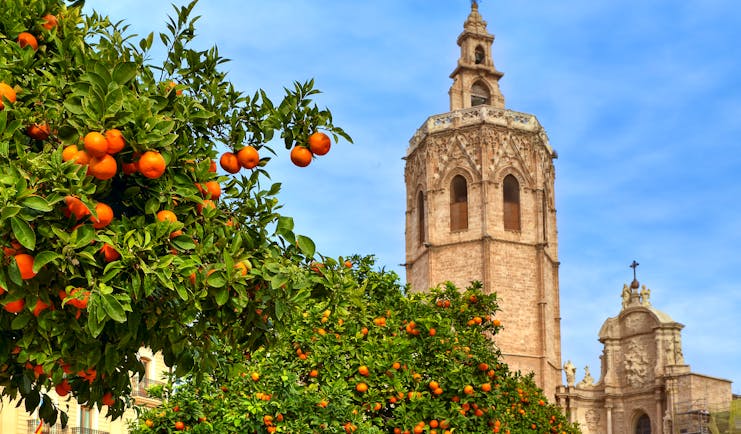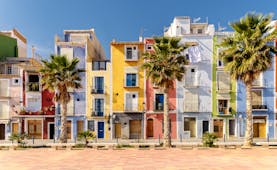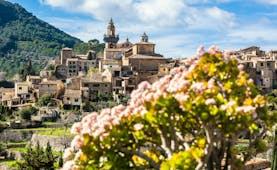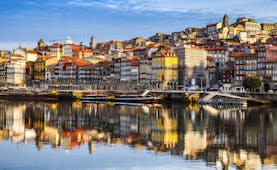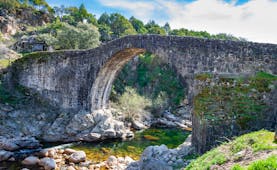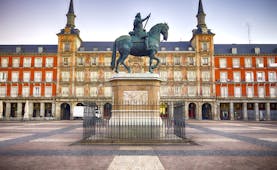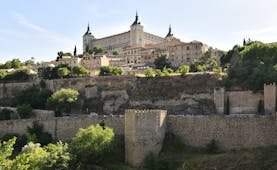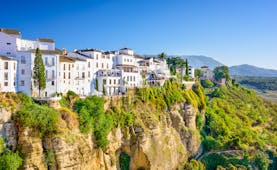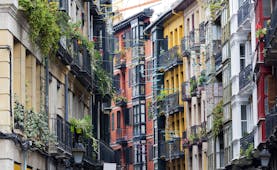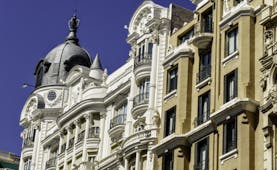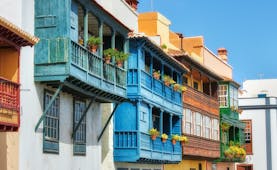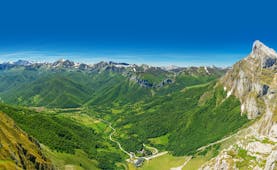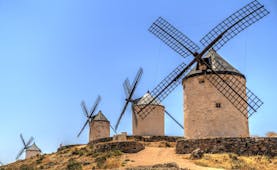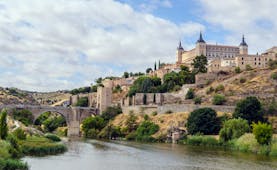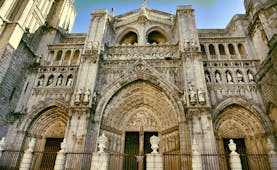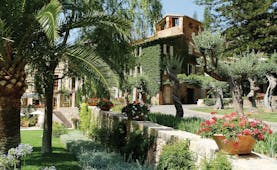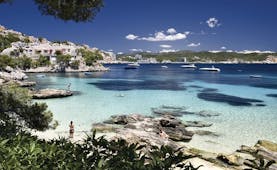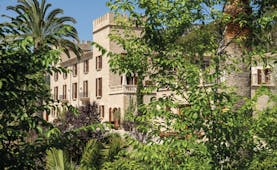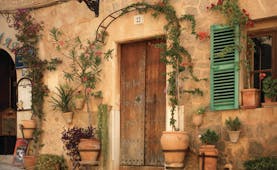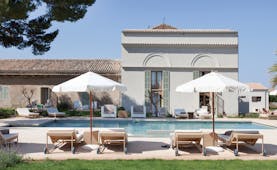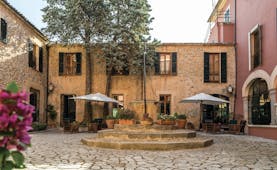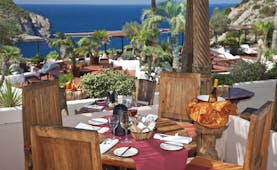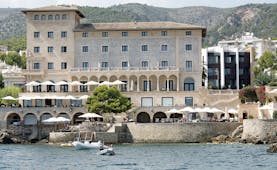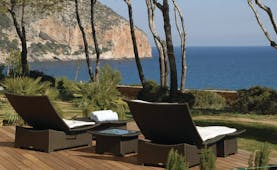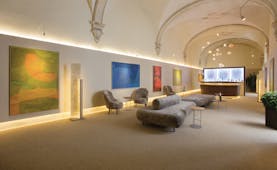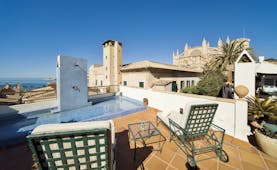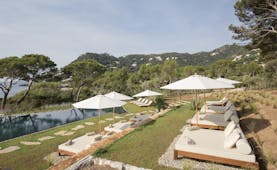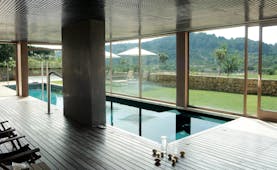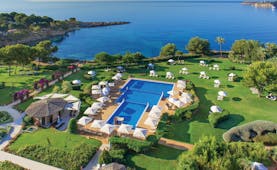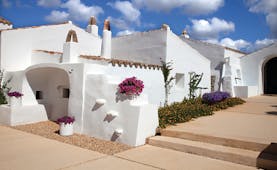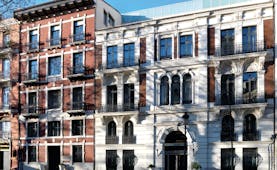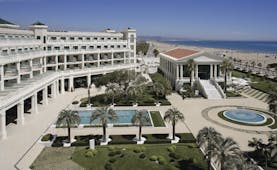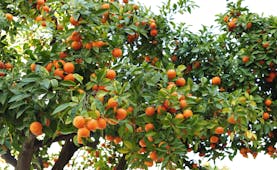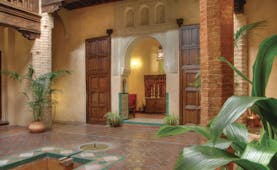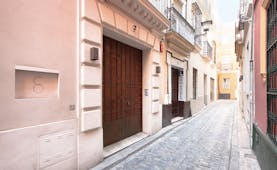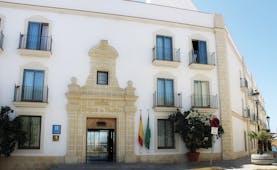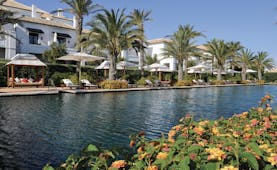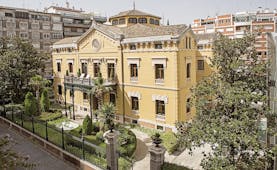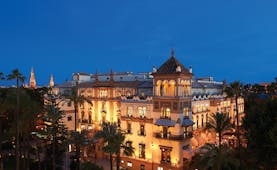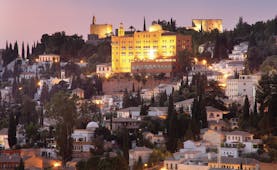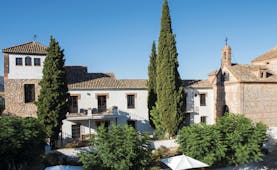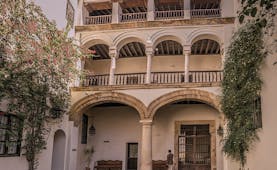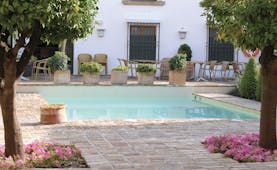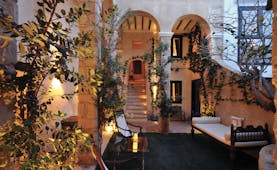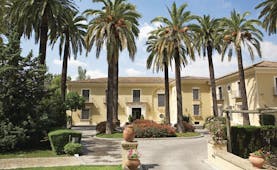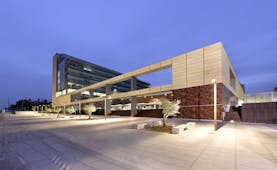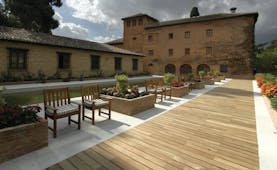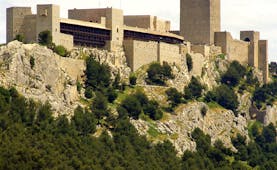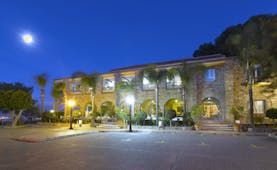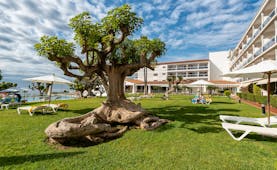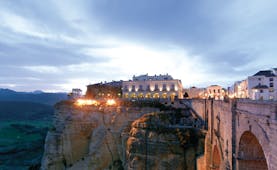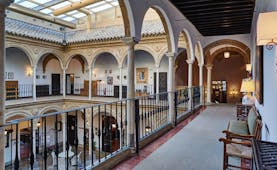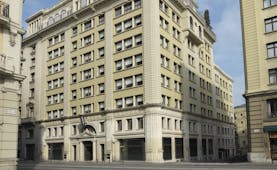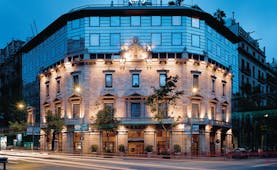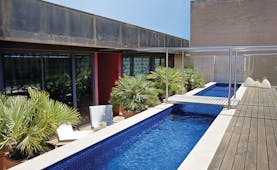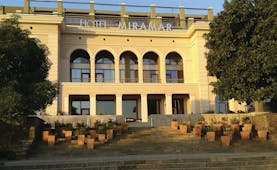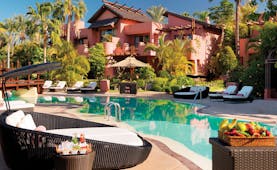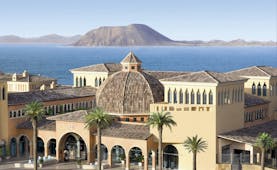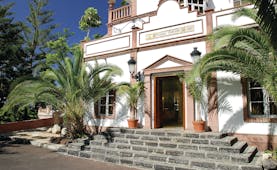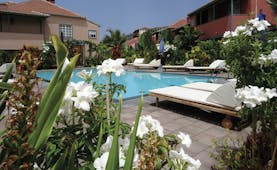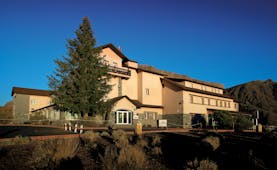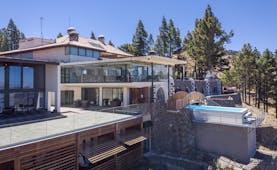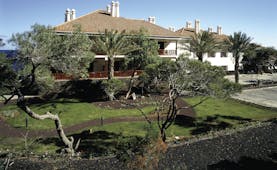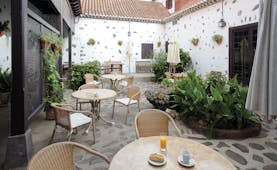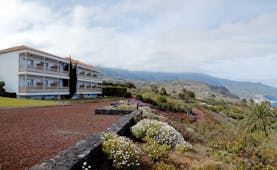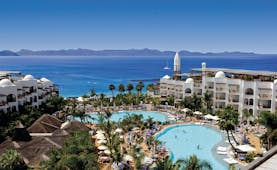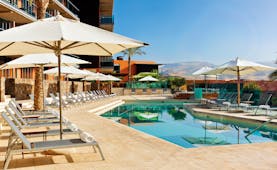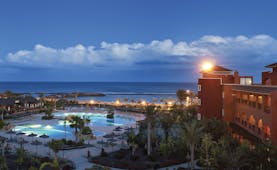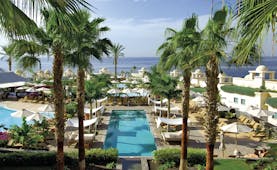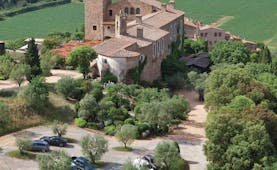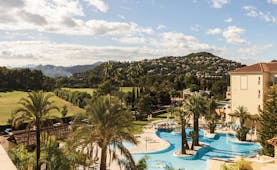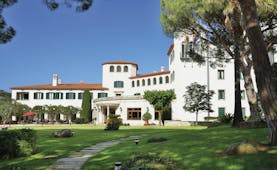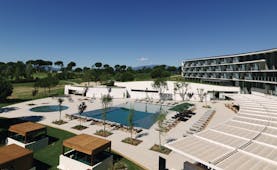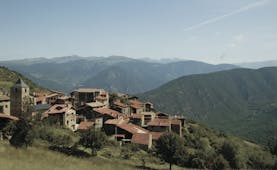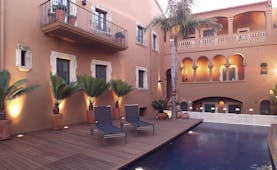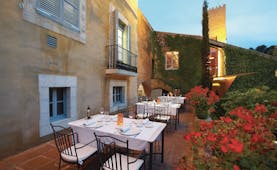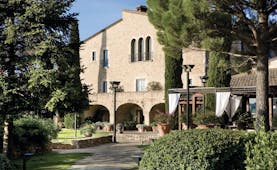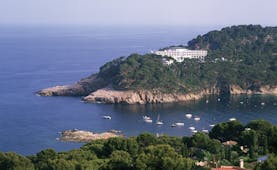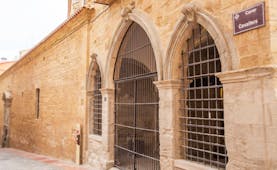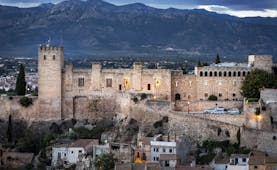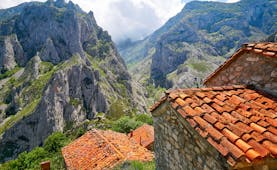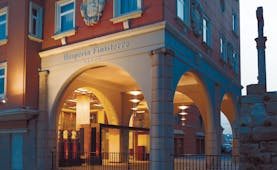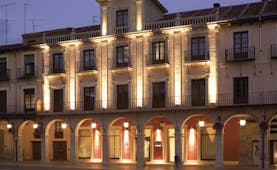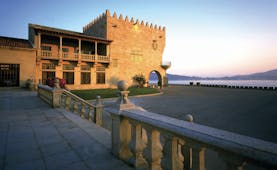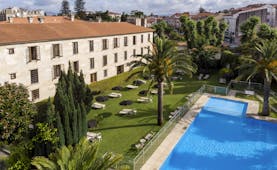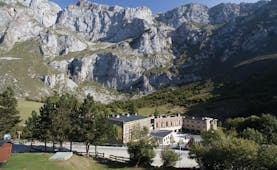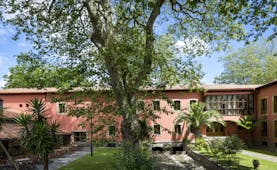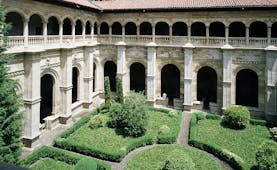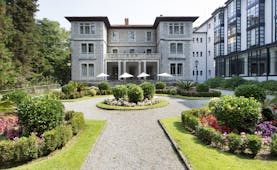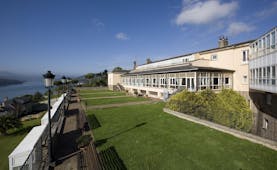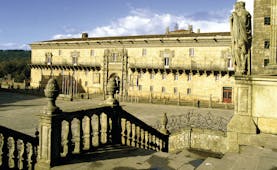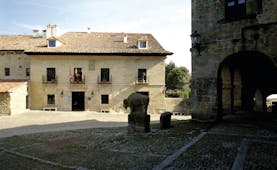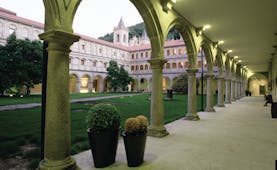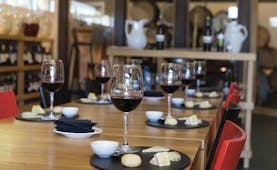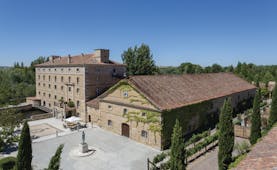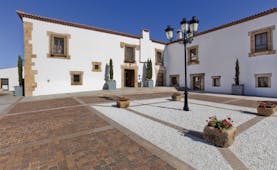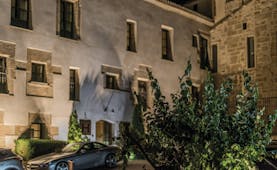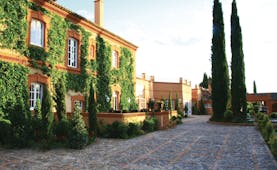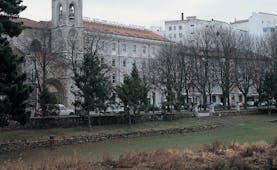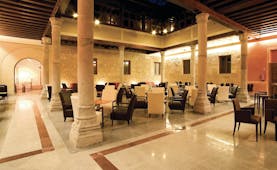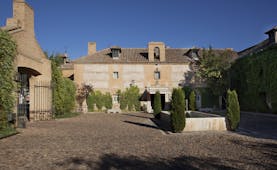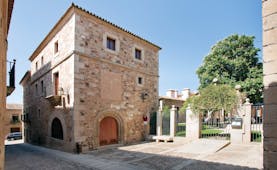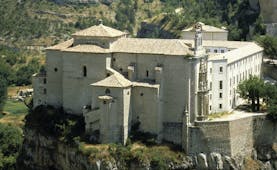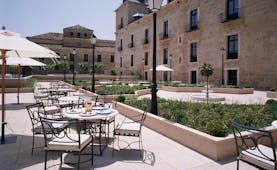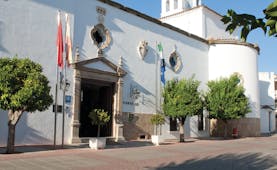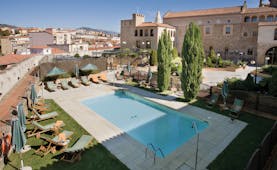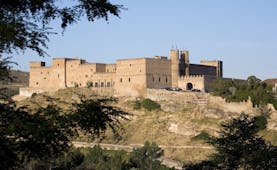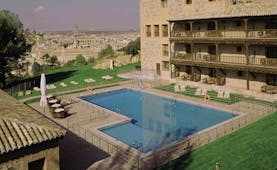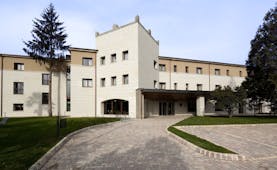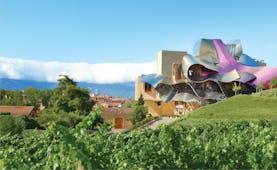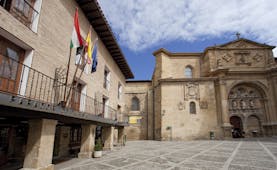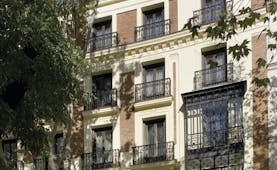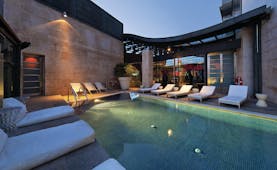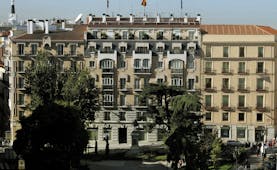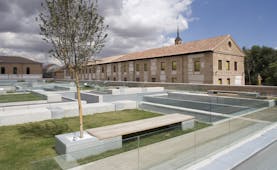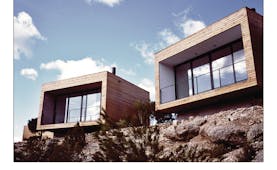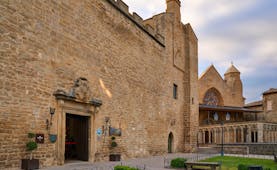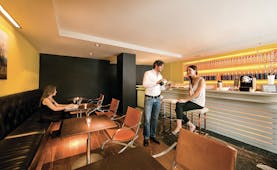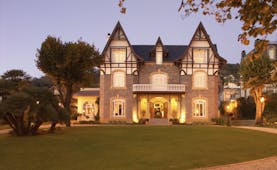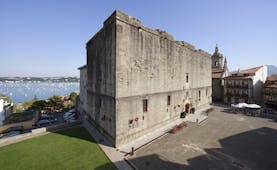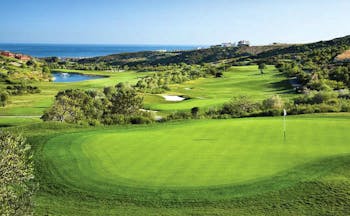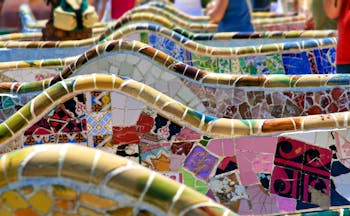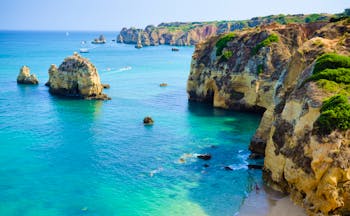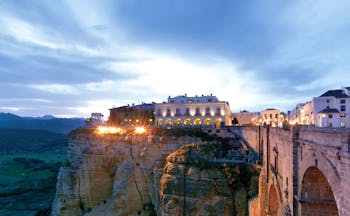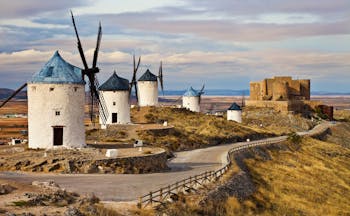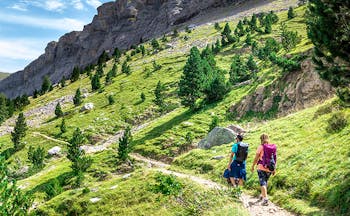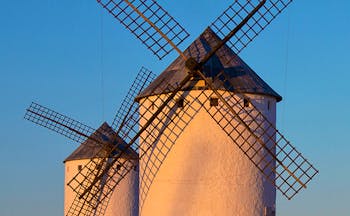Luxury fly-drive touring holiday including Valencia and the island of Mallorca, with ferry crossing
This 9-night luxury touring holiday takes you from the bustling mainland city of Valencia, by ferry across the Mediterranean, to the beautiful island of Mallorca. Your holiday starts in the city of Valencia, capital of a semi-independent region in Spain with its own language, valenciano, and attracting visitors with its coast, culture and cuisine. This is the third largest city in Spain, and there are numerous historic monuments such as the 15th century silk exchange and cathedral as well as the ultra-modern buildings in the City of Arts and Sciences. No trip to Valencia would be complete without sharing a delicious paella, the iconic dish of saffron-infused rice which originated here. Head to the golden sands of the long beach to relax in the sun and wind down in the evenings at your hotel or in one of the city’s vibrant bars. The overnight ferry service to Mallorca doesn’t leave until the evening, giving you another day to enjoy a relaxed breakfast and maybe fit in a museum visit or more time on the beach. The nine-hour crossing takes you in comfort from the Iberian Peninsula to the Balearic Islands with accommodation included in a private twin cabin. You arrive in Palma de Mallorca the following morning and head to your hotel in the city centre to drop off your luggage. Spend the next few days here exploring the cultural centre of Mallorca. The city has an impressive history with remains from the Roman, Byzantine, Moorish and Spanish occupations offering plenty of interest. Highlights include the cobbled streets of the Old Town, Arab Baths and beautiful La Seu Cathedral which overlooks the port. The final part of your luxury holiday to Valencia and Mallorca takes you into the charming countryside of the island. Collect your hire car from Palma airport and head for the northern coast. The buildings of the city soon give way to open fields, fincas and olive groves and the majestic Tramuntana mountains are clearly visible tracing the horizon. The road leads you up and through this beautiful UNESCO site, passing the charming town of Valdemossa to bring you to the small village of Deia. Nestled in the rugged countryside, Deia sits perched between the rocky cliffs and sparkling sea. This is a fantastic location which offers as much or as little as guests could want. Those feeling active can enjoy hiking trails and coastal walks as well as tennis and activities at the hotel, whilst boat trips, painting classes and the small cove of Cala Deia offer more relaxed options. Your hire-car gives you flexibility to explore the nearby surroundings such as the fishing village of Port Soller and Jardins d’Alfabia.
Highlights
Valencia • City of Arts and Sciences • Paella • Valencia Cathedral • Malvarosa and Las Arenas Beaches • Palma de Mallorca • La Seu Cathedral • Arab Baths • Deia • Puerto de Soller
Day by day
Start your holiday flying from the UK to Valencia. We include flights with British Airways from London Heathrow to Valencia but can offer regional options if preferred. It is a short taxi journey from the airport to your luxury hotel in the city. Settle into your room this evening and perhaps enjoy a meal at the restaurant followed by drinks at the hotel’s bar.
You have two whole days to enjoy the city. Valencia is the third-largest city in Spain and capital of the semi-independent region which takes its name. This is one of Europe’s capitals for culture and is renowned for its iconic City of Arts and Sciences (Ciudad de las Artes y las Ciencias). Designed by local architect Santiago Calatrava, you will find the aquarium, opera house, science museum and 3D cinema amongst the ultra-modern buildings. Head into the old town to discover more of Valencia’s past and historical buildings such as the UNESCO-recognised Silk Exchange. The neighbourhood of El Carmen is one of the most important parts of the city and it is here that visitors will find Saint Mary’s Cathedral which houses a Holy Chalice (claimed to be the Grail). Take time off from the busy city centre with a walk along the long, sandy beaches of Malvarosa and Las Arenas, or perhaps venture outside the city to the nearby Albufera Natural Park for incredible sunsets over the wetlands. Return to Valencia in the evenings to make the most of the local cuisine, this is the traditional birthplace of paella, and the vibrant nightlife.
You can enjoy a relaxed breakfast at your hotel as you have most of the day free before heading to the port in the evening for your ferry. We recommend leaving your luggage with the hotel’s concierge for the day. If the sun is shining then head to the sandy beach for the afternoon or alternatively fit in a visit to one of the city’s museums. Return to your hotel to collect your bags and then to the port to meet your ferry. There is a lobby bar on board where you can purchase drinks and refreshments before settling into your cabin for the overnight crossing to Mallorca.
The ferry arrives in Palma at around 7am and we recommend taking a local taxi to your hotel. We can request an early check-in for you which can be guaranteed at a supplement, otherwise, leave your bags with reception and head out to explore the small city of Palma where you spend the next couple of days. This is the cultural centre of the Mallorca and offers plenty of interest with relics and buildings from the Roman, Byzantine, Moorish and Spanish occupations. The conflicting past of the island is typified in the history of La Seu. This beautiful Gothic cathedral is an impressive building by the port, which was built on the remains of a Mosque, which in turn was built on the site of a Christian church. Other highlights of Palma include the cobbled streets of the Old Quarter, the gastronomic market of San Juan with local produce stalls, café and terrace and the 10th century Arab Baths. Mallorca is famously popular with cyclists and you will regularly find clusters of riders on the island’s roads. For an easy introduction, guests might like to hire cycles in Palma and take the flat cycle route along the seafront to S’Arenal. This is mostly along cycle lanes with one section in the middle on roads and is about a 30km round trip. Palma has a vast array of restaurants to choose from with traditional gastronomy based around local pork, freshly caught fish and vegetables. Restaurants in Palma offer innovative spins on hearty dishes, adding delicious local ingredients like lemons, olives and natural salt from the island’s southern plains.
You enjoy breakfast at your hotel before heading to collect your hire-car (private transfers can be arranged as an alternative to the hire-car if preferred). We recommend picking this up from the airport and then driving about 35 km to Deia. The commercial and residential buildings of the city soon give way to open fields, white-washed fincas and olive groves to either side of you as you drive north. The majestic Tramuntana mountain range can clearly be seen ahead, rising abruptly from the flat plains to interrupt trace a jagged horizon. Skirting the inevitable groups of cyclists in the spring, the road leads you up and through this beautiful UNESCO site to Valedemossa. This beautiful village sits in an idyllic valley and is a lovely space to stop off for lunch on your way through the mountains. There is a 13th century monastery, the Real Cartuja, where the Frederic Chopin stayed over the winter of 1838-9 and you’ll find the book “A Winter in Majorca” about his stay in many of the village shops. Tickets for the Real Cartuja allow you to visit the church, cloisters and old pharmacy as well as including a short Chopin piano recital. Continuing your journey, the road will bring you to the village of Deia where you stay next. This charming small town sits amidst terraced orchards, perched between the craggy mountains and sparkling sea and is the perfect place to experience rural Mallorca.
You have two full days in Deia although this can be extended if you wish. The simplicity of the pleasures of Deia really takes visitors back to traditional life in Old Mallorca and perhaps it is this tranquil atmosphere that has inspired the work of the many artists, musicians and poets that have flocked here over the years. Possibly the most famous of these names is that of Robert Graves writer of I, Claudius. Guests in Deia can visit his house-museum and admire the stunning views which inspired him. In a converted mill in the centre of the town is the Archaeological Museum and Research Centre. This museum was founded by the American Painter Dr William H Waldren and is a valuable insight into the history of the area. The Monastir de Miramar near San Marroig once trained monks in Arabic, but now houses another interesting museum; its old stone walls and gardens overlook a rocky peninsula that forms a natural cove on the northern shore. The Manor House of San Marroig is the former home of the Archduke. Despite its formidable façade, the main highlight of this building is the small, circular neo-classical temple in the garden, which has magnificent views across the sea. For a taste of traditional Mallorcan fishing, head down to the Cala de Deia which can be reached with a short downhill walk of about 20 minutes. This small shingle beach has crystal clear water and is perfectly tranquil, shared only by the locals. The single restaurant and bar serve fish straight from the sea, caught by the fishermen you can see on the beach. Those feeling more active can make the most of the walking trails along the coast which takes you to either Soller or Port de Soller, both of which can be easily reached with a sturdy pair of shoes. Your hire car gives you flexibility to explore the nearby surroundings such as the fishing village of Port Soller and Jardins d’Alfabia. Back in Deia, we recommend spending the balmy evenings enjoying dinner and a drink on the terrace and watching the sun disappear behind the mountains. Despite being a fairly small town, there is ample choice for dining aside from your hotel with several local restaurants and other hotels to choose from.
Today, depending on the time of your flight, you check-out after breakfast and make your way back to Palma. Drop off your car at the airport before taking your flight back to the UK.
It has been a lovely holiday & once again, you did not disappoint. Thank you again for everything. We look forward to contacting you again for our next adventure.Mrs H, July 2025
Holiday price guide Prices from £2,710 per person in low season or £3,080 per person in high season based on two people sharing a double or twin room.
Holiday Code SNFD15
Call us on 01392 441245
Luxury fly-drive touring holiday including Valencia and the island of Mallorca, with ferry crossing
Start your holiday flying from the UK to Valencia. We include flights with British Airways from London Heathrow to Valencia but can offer regional options if preferred. It is a short taxi journey from the airport to your luxury hotel in the city. Settle into your room this evening and perhaps enjoy a meal at the restaurant followed by drinks at the hotel’s bar.
You have two whole days to enjoy the city. Valencia is the third-largest city in Spain and capital of the semi-independent region which takes its name. This is one of Europe’s capitals for culture and is renowned for its iconic City of Arts and Sciences (Ciudad de las Artes y las Ciencias). Designed by local architect Santiago Calatrava, you will find the aquarium, opera house, science museum and 3D cinema amongst the ultra-modern buildings. Head into the old town to discover more of Valencia’s past and historical buildings such as the UNESCO-recognised Silk Exchange. The neighbourhood of El Carmen is one of the most important parts of the city and it is here that visitors will find Saint Mary’s Cathedral which houses a Holy Chalice (claimed to be the Grail). Take time off from the busy city centre with a walk along the long, sandy beaches of Malvarosa and Las Arenas, or perhaps venture outside the city to the nearby Albufera Natural Park for incredible sunsets over the wetlands. Return to Valencia in the evenings to make the most of the local cuisine, this is the traditional birthplace of paella, and the vibrant nightlife.
You can enjoy a relaxed breakfast at your hotel as you have most of the day free before heading to the port in the evening for your ferry. We recommend leaving your luggage with the hotel’s concierge for the day. If the sun is shining then head to the sandy beach for the afternoon or alternatively fit in a visit to one of the city’s museums. Return to your hotel to collect your bags and then to the port to meet your ferry. There is a lobby bar on board where you can purchase drinks and refreshments before settling into your cabin for the overnight crossing to Mallorca.
The ferry arrives in Palma at around 7am and we recommend taking a local taxi to your hotel. We can request an early check-in for you which can be guaranteed at a supplement, otherwise, leave your bags with reception and head out to explore the small city of Palma where you spend the next couple of days. This is the cultural centre of the Mallorca and offers plenty of interest with relics and buildings from the Roman, Byzantine, Moorish and Spanish occupations. The conflicting past of the island is typified in the history of La Seu. This beautiful Gothic cathedral is an impressive building by the port, which was built on the remains of a Mosque, which in turn was built on the site of a Christian church. Other highlights of Palma include the cobbled streets of the Old Quarter, the gastronomic market of San Juan with local produce stalls, café and terrace and the 10th century Arab Baths. Mallorca is famously popular with cyclists and you will regularly find clusters of riders on the island’s roads. For an easy introduction, guests might like to hire cycles in Palma and take the flat cycle route along the seafront to S’Arenal. This is mostly along cycle lanes with one section in the middle on roads and is about a 30km round trip. Palma has a vast array of restaurants to choose from with traditional gastronomy based around local pork, freshly caught fish and vegetables. Restaurants in Palma offer innovative spins on hearty dishes, adding delicious local ingredients like lemons, olives and natural salt from the island’s southern plains.
You enjoy breakfast at your hotel before heading to collect your hire-car (private transfers can be arranged as an alternative to the hire-car if preferred). We recommend picking this up from the airport and then driving about 35 km to Deia. The commercial and residential buildings of the city soon give way to open fields, white-washed fincas and olive groves to either side of you as you drive north. The majestic Tramuntana mountain range can clearly be seen ahead, rising abruptly from the flat plains to interrupt trace a jagged horizon. Skirting the inevitable groups of cyclists in the spring, the road leads you up and through this beautiful UNESCO site to Valedemossa. This beautiful village sits in an idyllic valley and is a lovely space to stop off for lunch on your way through the mountains. There is a 13th century monastery, the Real Cartuja, where the Frederic Chopin stayed over the winter of 1838-9 and you’ll find the book “A Winter in Majorca” about his stay in many of the village shops. Tickets for the Real Cartuja allow you to visit the church, cloisters and old pharmacy as well as including a short Chopin piano recital. Continuing your journey, the road will bring you to the village of Deia where you stay next. This charming small town sits amidst terraced orchards, perched between the craggy mountains and sparkling sea and is the perfect place to experience rural Mallorca.
You have two full days in Deia although this can be extended if you wish. The simplicity of the pleasures of Deia really takes visitors back to traditional life in Old Mallorca and perhaps it is this tranquil atmosphere that has inspired the work of the many artists, musicians and poets that have flocked here over the years. Possibly the most famous of these names is that of Robert Graves writer of I, Claudius. Guests in Deia can visit his house-museum and admire the stunning views which inspired him. In a converted mill in the centre of the town is the Archaeological Museum and Research Centre. This museum was founded by the American Painter Dr William H Waldren and is a valuable insight into the history of the area. The Monastir de Miramar near San Marroig once trained monks in Arabic, but now houses another interesting museum; its old stone walls and gardens overlook a rocky peninsula that forms a natural cove on the northern shore. The Manor House of San Marroig is the former home of the Archduke. Despite its formidable façade, the main highlight of this building is the small, circular neo-classical temple in the garden, which has magnificent views across the sea. For a taste of traditional Mallorcan fishing, head down to the Cala de Deia which can be reached with a short downhill walk of about 20 minutes. This small shingle beach has crystal clear water and is perfectly tranquil, shared only by the locals. The single restaurant and bar serve fish straight from the sea, caught by the fishermen you can see on the beach. Those feeling more active can make the most of the walking trails along the coast which takes you to either Soller or Port de Soller, both of which can be easily reached with a sturdy pair of shoes. Your hire car gives you flexibility to explore the nearby surroundings such as the fishing village of Port Soller and Jardins d’Alfabia. Back in Deia, we recommend spending the balmy evenings enjoying dinner and a drink on the terrace and watching the sun disappear behind the mountains. Despite being a fairly small town, there is ample choice for dining aside from your hotel with several local restaurants and other hotels to choose from.
Today, depending on the time of your flight, you check-out after breakfast and make your way back to Palma. Drop off your car at the airport before taking your flight back to the UK.
It has been a lovely holiday & once again, you did not disappoint. Thank you again for everything. We look forward to contacting you again for our next adventure.Mrs H, July 2025
Holiday price guide Prices from £2,710 per person in low season or £3,080 per person in high season based on two people sharing a double or twin room.
Holiday Code SNFD15
Our prices include
● Scheduled return flights with British Airways from London to Valencia and from Palma to London
● Overnight ferry crossing from Valencia to Palma with private twin cabin
● Hire of a Group B car for three days in Mallorca
● 3 nights’ bed and breakfast in a classic double room with city view at the Las Arenas Balneario Resort in Valencia
● 2 nights’ bed and breakfast in a superior double room at the Convent de la Missio in Palma de Mallorca
● 3 nights’ bed and breakfast in a classic double room at the Belmond La Residencia in Deia
● Concierge service and Expressions Holidays regional helpful hints
Our prices do not include
● Early check-in or late check-out at any hotels (although we can arrange this on request at additional cost)
● Any other services not mentioned above, such as additional transfers and meals except breakfast at hotels
● Personal holiday insurance. This is essential and cover should be in place from when you book the holiday.
● Local tourist tax, usually between Euros 1 and 3 per person per night, and payable locally to the hotel
Additional information
Travel times for this holiday
Valencia to Palma de Mallorca: 9 hours by ferry
Palma to Deia: 45 minutes by car
Call us on 01392 441245
Luxury fly-drive touring holiday including Valencia and the island of Mallorca, with ferry crossing
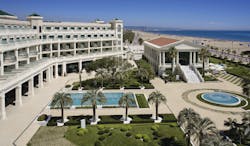
Las Arenas Balneario Resort Hotel is a striking 5-star deluxe property set beside Valencia's beautiful sandy beach. Perfect for couples and families alike, the property offers excellent cuisine and spa facilities, as well as a kid's club for younger guests.
Classic double room

Hotel Convent de la Missio is an exclusive 5-star hotel in an excellent location in central old town. The delicious cuisine, prepared by a Michelin-starred chef, relaxing wellness area and modern design make it a luxury haven in the city.
Superior double

Belmond La Residencia is a 5-star luxury hotel with exquisite accommodation and outstanding cuisine as well as impeccable and warmhearted service. A real treat at any time, ideal for soaking up the sun or indulging in a range of activities.
Classic double room
This holiday can be arranged throughout the year. Additional nights can be added at any point on this itinerary. Timings can vary depending on the month and day of the week.
It has been a lovely holiday & once again, you did not disappoint. Thank you again for everything. We look forward to contacting you again for our next adventure.Mrs H, July 2025
Holiday price guide Prices from £2,710 per person in low season or £3,080 per person in high season based on two people sharing a double or twin room.
Holiday Code SNFD15
Call us on 01392 441245
Luxury fly-drive touring holiday including Valencia and the island of Mallorca, with ferry crossing
About Mallorca and the Balearics
An Expressions tailor-made holiday to Mallorca, Menorca and Ibiza feature the best four and five star hotels on each of the islands, including prestigious hillside properties, beach hotels and boutique retreats. Lying around 100 miles from the Spanish mainland in the Mediterranean Sea is Mallorca (otherwise known as Majorca), the largest of the Balearic Islands and an incredibly popular destination for tourists. With sun, sea and sand in abundance, the island's attraction as a beach holiday destination is obvious. However, step away from the beaches and you'll find rugged mountains, picturesque rural villages, hilltop monasteries, extensive underground caves, pretty harbours and much more. The islands of Menorca and Ibiza capture the dynamic landscape of Mallorca but on a more intimate scale. Our tailor-made luxury holidays allow you to discover the very best of the Balearic Islands. In the southwest of Mallorca is Palma, a seaside city with an abundance of historical and cultural sights. Dominating the island's west coast are the Tramuntana mountains, where pretty villages sit amidst olive terraces, terraced farmland clings to steep slopes and rugged cliffs drop away to the sparkling sea. In eastern Mallorca is a smaller mountain range which gives way to sand dunes and remote beaches, whilst the unspoilt scenery of the south includes nature reserves, secluded coves and charming fishing villages. The centre of the island is home to a fertile plain, an area with ancient windmills, vineyards and sleepy market towns which offer a glimpse into Mallorca's rural traditions. With a number of interesting towns and villages, stunning beaches and a great variety in the natural scenery, the Balearics are outstanding holiday destinations with plenty of opportunities for activities as well as seaside relaxation. Many of the popular tourist resorts are in the north and west of Mallorca, but there are many places to discover in other parts of the island. The varied terrain provides excellent opportunities for cycling and hiking, with numerous trails which are suited to walkers of all ages and fitness levels. Cuitadella, in Menorca, has an enchanting old town and archaeological sites, while Mahon, the island's capital, is one of the Mediterranean's most picturesque cities. Well-known for its appeal with tourists, Ibiza is also home to a wealth of tranquil coves, lush forests, and small villages which encapsulate the Balearics' laid-back lifestyle.
Highlights of Mallorca and the Balearic Islands
Mallorca: Palma de Mallorca, home to attractions such as the Gothic La Seu Cathedral which sits overlooking the harbour, 10th century Arab baths and authentic old streets. The pretty villages including Deià, Valldemossa and Fornalutx which you will encounter if you drive along the winding roads which run along the western coast, set between mountains and sea. Appealing coastal resorts including Alcúdia, Puerto Pollensa and Puerto de Soller. Hilltop sanctuaries which are dotted throughout the island, including Lluc Monastery in the Tramuntana mountains and the Sanctuary of Sant Salvador in the south east of the island. Traditional fishing villages such as Cala Figuera. Beautiful beaches including Es Trenc, Es Carbo and Cala Barques. The Caves of Drach near Porto Christo. Formentor, the peninsula in the northeast of the island which is home to a famous lighthouse in a stunning location. Natural parks including S'Albufera wetlands near Alcúdia, Llevant Peninsula nature reserve in the north east and the Cabrera archipelago off the southern coast of Mallorca. Ibiza: The dark sands and rocky cliffs of Cala Boix. The bohemian market at the bottom of the hills around San Carles. Clear-water beaches including Benirras and Cala Saladas. Boat trips to neighbouring Formentera to see the windmills and cycle or hike across the hills. Menorca: The hiking trails around Mount Toro. Cultural and historic cities including Mahon and the old town of Cuitadella. Caves and gorges at the Cales Coves. Sandy beaches at Binibequer and Cala'n Porter in the south, and Punta Prima to the east, amongst many others. The ruined castle of Santa Àgueda in the north of the island. With a number of interesting towns and villages, stunning beaches and a great variety in the natural scenery, the Balearic Islands are outstanding holiday destinations with plenty of opportunities for walking and cycling as well as seaside relaxation.
Festivals in Mallorca and the Balearic Islands
January: Festival of Palma de Mallorca's patron saint, March/April: Holy week celebrations, April: Pollença wine fair, May: Palma International Boat Show, May: Ibiza International Film Festival, April/May: Spring fairs, June: Midsummer's eve festivals, July: Festival of the patron saint of fishermen, July: International Folklore Festival (Soller), June: Festival of Sant Joan (Ibiza, Menorca), July: Sant Martí horse festival (Es Mercadal, Menorca), August: Summer Music festival (Menorca), August: Earth Festival (Ibiza), September: Festival of King Jaume I, September: Grape harvest celebrations (Binissalem), October: Alcudia agricultural fair, November: Caimari olive fair (Tramuntana mountains), December: Christmas markets.
Gastronomy of the Balearic Islands
Traditional cuisine in the Balearic Islands is rich and varied, making excellent use of the abundant local ingredients including pork, fish and vegetables as well as olive oil and lard. Olives, almonds and citrus fruit are grown across the island, as are the grapes which are used to produce a selection of white, rosé and red wines. Local specialities in the Balearics include ‘Sobrasada’ (a type of sausage), ‘Arros Brut’ (saffron rice cooked with meat and vegetables), ‘Frit mallorqui’ (fried offal with potatoes and vegetables) and ‘Ensaimada’ (a sweet bun). Local desserts are made with almonds or nougat, and seafood dishes, including ‘Caldereta de Ilagosta’ (lobster stew), are a staple. Speciality spirits from Menorca include Maó Gin, made from juniper berries, and Port. The Hierbas Ibicencas, and Frígola in Ibiza are aromatic drinks built around aniseed and thyme respectively.
Climate of the Balearic Islands
The Balearic Islands have a typical Mediterranean climate with hot, dry summers and mild and stormy winters. There is some variation across Mallorca as the Tramuntana Mountains protect the southwest of the island. Average summer temperatures are around 25 degrees, when seas are also warm and a cooling breeze prevents excessive heat. Spring and autumn are great seasons to visit as temperatures are pleasant but there are fewer tourists, although nights can be cold and there is some rainfall. Average temperatures in winter are around 10 degrees with occasional showers and snow falling in the mountains.
Call us on 01392 441245
Luxury fly-drive touring holiday including Valencia and the island of Mallorca, with ferry crossing
About Valencia and Murcia
The regions of Valencia and Murcia offer the chance to explore the long stretch of Spain’s eastern coast and the contrasting landscapes found inland. Picturesque villages lie scattered along the shore between larger towns, many of which have been overlooked by mass market tourism and are still beautifully authentic. The inland reaches of these regions vary drastically from fertile groves of oranges, dates and even rice to arid deserts spotted with isolated white buildings and hilltop towns. Valencia is another semi-independent region with its own language, valenciano. The language is derived from Catalan and has many similarities but it’s unwise to comment on this to a local as they are fiercely proud of their unique identity. Alongside valenciano and Castilian Spanish there is also the legacy of the long Arab occupation. On a stunning beach of golden sand is the regional capital of Valencia, Spain’s third-largest city. Visitors to this region must be sure to try a real paella as the famous dish originated here. There are countless combinations of flavours and ingredients to be tried in the restaurants, but the most traditional option is rabbit and chicken in a vibrant saffron rice. Valencia has reinvented itself in recent years with futuristic architecture and a sophisticated port area which contrast with the historic buildings of the atmospheric old town. On the other hand, Murcia is a historic city which is particularly noted for its Baroque cathedral and tapas scene. Between these two locations you will find the bustling town of Denia, launching point for ferries to the Balearic Islands. A historic port founded by the Romans, Denia has a hilltop castle, ancient fishing neighbourhood and beautiful beaches. The regions of Valencia and Murcia are particularly known for their festivals and two of Spain’s most iconic fiestas are held here. The crazy tomato fight of La Tomatina is Bunol is probably not to everyone’s taste, however the spring celebration of Las Fallas is highly recommended – a month filled with fireworks, huge bonfires and giant puppets that are set on fire at the end of the festivities. Booking in advance for this unique festival is essential.
Highlights of Valencia and Murcia
The City of Arts and Sciences and the Fine Arts Museum in Valencia. Historic monuments within Valencia including a 15th century silk exchange and a Cathedral, home to a Holy Chalice which is said to be the Holy Grail. Wildlife in the wetlands of the Albufera Natural Park. The lively university city of Murcia with Moorish fortified walls, Baroque cathedral and wealth of tapas bars. The Castell de la Santa Bárbara and Museo Arqueológico Pronvicial, giving the best views over the city of Alicante. The historic port town of Denia with its beautiful beaches, hilltop castle, former fishing neighbourhood or Baix la mar and Moorish influenced distrcit of Les Roques. Walking in Montgó Natural Park. Swimming at the secluded Les Rotes beach and nearby Cova Tallada (reached by boat or on foot). The town of Morella is the northern reaches of Valencia with its medieval fortified town and 13th century aqueduct. The iconic Penon de Ifach rock in the heart of Calpe. The colourful port city of Cartagena with its Roman Theatre, Castillo de la Concepcion and beautiful seafront promenade.
Festivals in Valencia and Murcia
March: Las Fallas festival of fire (Valencia), La Magdalena festivities in Castellon de la Plana. April: Easter celebrations and religious processions, Night of the Drums (Mula), Moor and Christians re-enactment fiesta in Banyeres de Mariola, Spring celebrations in Murcia including the “Burial of the Sardine”. June: Bonfires of San Juan Midsummer’s Eve Festival (Alicante). July: Valencia July Fair. August: La Tomatina tomato throwing festival (Bunol), August Fair in Xativa, the Corda fire festival in Paterna, Sexenni festival in Morella (every 6 years). September: Bull and horse droving in Segorbe, Murcia Fair, Romans and Carthaginians re-enactment in Cartagena.
Gastronomy in Valencia and Murcia
Cuisine in eastern Spain takes inspiration from both central Spain and the Arab influences of its past whilst making use of local ingredients available including seafood, fresh vegetables and game. Valencia and Murcia host many restaurants specialising in shellfish and fish, with fish often cooked in a salt crust or ‘a la espalda’ (lightly fried and baked). Paella, the vibrant rice dish which is known the world over originated in Valencia. Typical dishes include unusual ‘sea and mountain' combinations which use both meat and seafood, ‘Pa amb tomàquet' (bread with tomato, oil and garlic), ‘Fideuá' (a variant of Paella with pasta), ‘Zarzuela' (a seafood stew), ‘Escudella’ (a stew containing vegetables, meat, rice and pasta) and ‘Crema Catalana' (a Catalan version of a Crème Brûlée).
Climate in Valencia and Murcia
Valencia and Murcia enjoy a typical Mediterranean climate, although higher areas are somewhat cooler. Late spring and early autumn are great times to visit coastal areas as the weather is warm with temperatures of around 20 degrees centigrade, although some rainfall can be expected. Mid-summer in the cities can be unbearably hot, but the coastline is cooled by sea breezes. Winter is generally mild with occasional rain and average temperatures of 10-15 degrees, making this a favoured destination for cultural exploration year-round.

